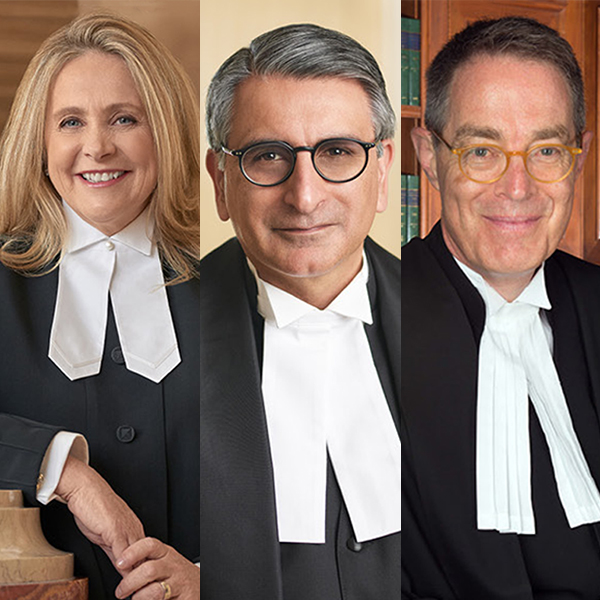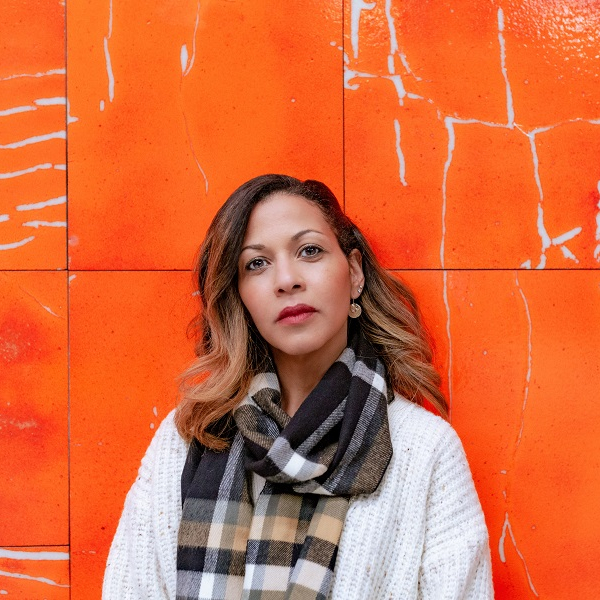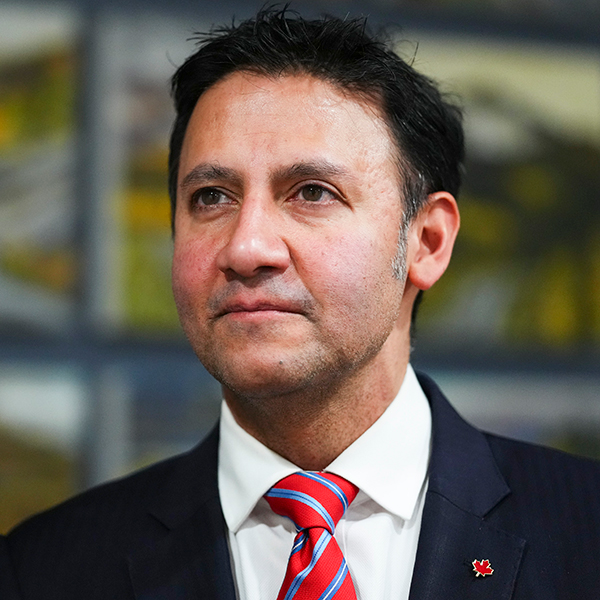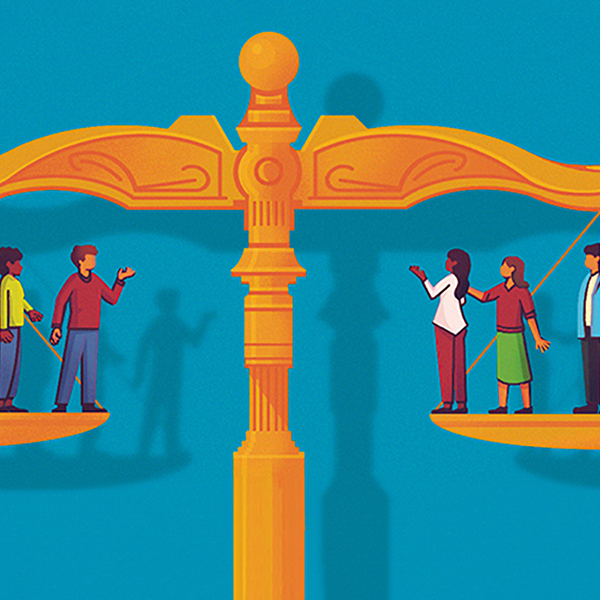The elegant, if undeniably sombre, walnut-and-mahogany panelled main courtroom of Canada’s Supreme Court is a familiar setting for Mahmud Jamal, BCL’93, LLB’93.
By his own count, he appeared 35 times before the nation’s nine top judges as an advocate, 31 times as lead counsel, representing clients as diverse as the Hutterite Brethren, the Greater Toronto Airports Authority, the Canadian Bar Association and the Privacy Commissioner of Canada.
As a young law clerk, with degrees from McGill and Yale, he spent an intense formative year at the Court assisting Justice Charles Gonthier, BCL’51, LLD’90, and years later as a veteran Toronto lawyer he felt confident enough in his litigation experience to write an authoritative paper for his fellow advocates on how to prepare oral arguments before the country’s most formidable inquisitors.
But when he was appointed to the Supreme Court last September, becoming the third McGill law graduate on the current court and the first racialized person to reach the highest level of Canada’s judiciary, his perspective changed dramatically.
“Being a judge inside the courtroom on the second floor is radically different from being a counsel coming and appearing for a 10- or 15-minute submission,” he says. “As a lawyer, you spend months or even years preparing your case, working your way up the appellate ladder, and then you get to the Supreme Court and you argue in a rush of adrenalin, and then you collapse, and you sit and wait. But for the judges, that means the work, the hard work, is just beginning.”
What that work entails may be something of a mystery to many Canadians. The deliberations of the nine justices occur behind closed doors, and the particulars of drafting decisions and seeking consensus among colleagues who aren’t shy about sharing their learned opinions are naturally very private.
A very different environment
Unlike the United States, where court appointments attract wall-to-wall media coverage in a highly politicized legal environment and judges achieve celebrity status, Canada’s justices have managed to remain relatively anonymous, and largely above any charges of partisanship.
No surprise if they prefer it that way. Vocal crowds aren’t protesting at the homes of Canadian justices because they oppose a momentous draft decision. “U.S. judges each travel with personal security as far as I know and I don’t have to do that, thankfully,” says Jamal, who lives in Ottawa as a requirement of his Court position, returning regularly to Toronto where his wife still resides (and where he used to coach soccer) while his younger son finishes high school.
Sheilah Martin, BCL’81, LLB’81, a former dean of law at the University of Calgary, and later a criminal and constitutional lawyer with notable experience working on behalf of the wrongfully convicted and for victims of residential schools, joined the Court in 2017 from the Alberta Court of Appeal.
By the standards of the tight Canadian legal world, this was big news – her lengthy and revealing application for the post was published online, and she was publicly grilled by parliamentarians as part of a more “transparent” appointment confirmation process established in 2016.
And then came a very Canadian moment of realization when she went on a Court retreat – yes, even the Supreme Court has them – immediately after joining the august judicial body, whose members still wear fur-trimmed scarlet robes and tricorne hats for ceremonial occasions.
“We were all out at a restaurant – you know, The Nine and spouses or whatever – and we were just sitting there, with no security and nobody knew who we were. In the States, that would never happen.”
The contrast seems clear: There is a certain modesty, if only in relative terms, about being a judge at the country’s highest court.
“Canadians don’t want blowhards or people who are vain or misunderstand their importance in the world,” says Nicholas Kasirer, BCL’85, LLB’85 (McGill’s dean of law from 2003 to 2009), who was appointed in 2019 as one of three mandated Quebec justices. “It’s the solemnity of judging your fellow citizens, which is a deeply serious project. If you think you’re called Honourable because you’re important, you’ve got it all wrong.”
But ask the justices about the real and perceived differences between the two countries’ Supreme Courts, and they become very … judge-like.
“You’ll accuse me, rightly, of judicial cautiousness,” Kasirer says. “The American system is often depicted by the press in a cartoon version. People hear these sound bites of aggressive questioning through the confirmation process of the candidate and form an opinion through that process. But it’s still rigorous, and the proof is that there have been some extraordinary judicial appointments in the U.S. It’s a little too easy to fix on the differences and then say in a rather unCanadian way how great we are and how lousy they are.”
“If we were at a cocktail party and it was off the record, we could have a fascinating discussion,” says Martin, before deftly turning the conversation to a description of the more carefully managed Canadian confirmation hearings, which are far less raucous and hostile and media-saturated than their American equivalent – but still an unsettling experience for judges unaccustomed to face-to-face scrutiny by politicians with rival agendas.
“You’re serving the public and it’s a chance for the public to get to know who you are – what you stand for and what you’ve done – and for the prime minister of the day to explain why this person was chosen, and then having people ask you questions. It was a bit of a scary experience, but it was also completely rewarding and at the end I was very glad to have done it.”
Jamal explains the noisier, and more divisive, response to U.S. appointments by noting that their Supreme Court judges are appointed for life (Canadian justices retire at 75), and that contentious political questions in the U.S. more often have a legal dimension their courts are asked to resolve. But, he adds, “I do bristle a bit at some of the stylized contrasts between our court and the U.S. court.” With his own experience on the bench in mind, he politely defers to U.S. Chief Justice John Roberts’ reassurance that the American court isn’t a political institution, that judgments are made on the basis of law rather than party affiliation.
“I can say without reservation that this is the case with our court,” says Jamal. “We are adjudicating one case at a time depending on what comes before us. It’s very difficult to predict which judges are going to vote in which direction on which cases – it really depends on the facts and the circumstances and the submissions, and often we don’t know going into a hearing what the result will be until we come out and we caucus. Sometimes your colleagues will surprise you.”
The demands of the job
All the judges previously worked on three-person panels at provincial appeal courts, but the daily routine at the Supreme Court still has the power to surprise and even shock.
“The volume of work is crushing,” says Kasirer. “It’s not so much that you don’t have time to think but that you’ve got to keep moving. The average Canadian might say, you hear 60 or 70 cases a year, are you playing golf all the time? But we also have hundreds of leave applications, where we first have to decide whether we’ll hear a case. And to decide whether we hear a case, we have to study it. Every case seems to pose metaphysical questions that don’t have obvious answers, and every single case is a tough one – you have to go to the bottom of the well every time.”
The court’s workload changed dramatically with the arrival of the Charter of Rights and Freedoms in 1982 – existing legislation had to be re-examined and reinterpreted against the rights and freedoms enunciated by the Charter. Unresolved political issues and fundamental legal problems all too often end up in court, leaving judges as the default ultimate arbiters.
Cases are more complex, with dozens of intervenors having their say, and the volume of material is many times greater than a few decades ago. The toughness of the job is undeniable, but for the cerebral jurists who find their way to the nation’s apex court, that is also where the satisfaction is found.
“It’s humbling and it’s also totally fascinating to be dealing with issues that are thought to be of national importance,” says Martin, likening every written judgment to a masters-level thesis.
“You don’t get easy cases. They require a very deep dive – where do they fit in jurisprudence, what is the appropriate response here, how will it serve people, is this not just a principled rule but a practical one? – and practical for the whole country. We’re getting to really basic questions about law and people and the relationship between them.”
“The great gift of McGill”
With a bilingual legal program offering degrees in both common law and civil law, McGill’s Faculty of Law is clearly a good fit with the needs and priorities of the Supreme Court. Having taught at McGill for two decades (Jamal being among his students), Kasirer can spot a commonality in his alumni colleagues.
“A McGill legal education and an exposure to the kind of law done there, and to life in Montreal, leaves a mark on a person. McGill does something different as a Faculty with a conception of law that is not univocal – it’s like if you speak multiple languages, you’re aware of a reality that transcends the language you know best.”
A judge educated in this way is less likely to adhere to fixed tradition or legal orthodoxy – and such openness and intellectual flexibility is required of judges in the Charter era.
“I went to law school wanting to make a difference in the world and thinking it was possible,” says the Montreal-born Martin. “And the great gift of McGill was to teach a comparative perspective from the outset, which makes you ask the question, why is this the rule? If civil law and common law, two well-established legal systems regulating the lives of millions of people, choose different rules, then you know it’s an active process of choice, and then you ask, which rule is better? And you start engaging in a critical analysis: Is this rule doing its job, what’s the rationale behind it, how does it fit? You don’t just think there’s one correct law, you know that it’s a choice, and you then have to question the wisdom of the choice.”
While the level of discussion at the Court is “very much recognizable” to a veteran of academic law like Justice Kasirer, he notes a key vocational difference: “Law professors operate in a speculative mode while people here are much more instrumental, trying to get from A to B.”
They’re also necessarily generalists. “Here you don’t have the luxury of writing only in areas you specialize in,” says Jamal. “One of the great joys of the job, frankly, is the opportunity to learn in such broadly different areas of the law.”
Judges aren’t conscripted into writing a majority judgment. They put up their hand just like at school, and Chief Justice Richard Wagner chooses through a combination of expertise and workload and obvious enthusiasm. “Sometimes you volunteer,” says Jamal, “because there’s something about the case or the argument that you found attractive, or you can say something useful.”
Supreme Court judges, however extensive and focused their legal training, see themselves as professional writers. They prepare for cases, they listen to arguments, they read research supplied by their brilliant law clerks (from whose ranks future Supreme Court justices will almost surely be drawn), they debate with their colleagues – but at some point one of them has to sit down at five in the morning and start writing.
Drafts are circulated and colleagues offer critiques, pointing out ambiguous phrasing that might have worrisome repercussions in the law, offering legal citations that could strengthen an argument. Martin, when talking to schoolchildren touring the Court, tells them that it’s like doing a group project every day.
But the sense of responsibility is enormous and it can eat away at even the most accomplished jurist.
Jamal describes his feelings as the new person in the room, preparing for a vote – learning how to present his position in conference with the other judges, making his point succinctly and clearly but with sufficient mastery of legal detail, taming the complexities of a case and resolving persuasive rival arguments – as being tinged with apprehension.
His solution, which he first learned as an uncertain McGill student approaching a new area of law and then perfected as a litigator, is to be patient with his anxieties and uncertainties, and then simply put in the work, reading and thinking for days on end. “Clarity will emerge. It always does. And at a certain point it must emerge. Because you have to vote.”




